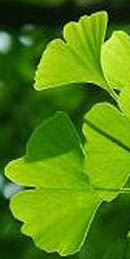 The maidenhair tree is one of the most interesting trees alive! Fossil leaves from ancient trees have been found in rock dating to Jurassic times, almost 200 million years ago, when dinosaurs walked the earth so ginkgoes are considered ”living fossils”. The leaves are very attractive, resembling a Chinese paper fan in shape, and are light green when they open in spring, turning pure intense yellow in the fall when they fall all at once. Male and female reproductive parts are borne on separate trees and you want to be sure and buy males because the fruit from the females smells like dog poop when the fruits are broken open. The fruits are about ½” across, spherical, and dull yellow so add nothing positive the over all effect of the tree. Buying a named (male) variety is a good idea so that you can be sure of a beautiful growth form and one that fits into the space and surroundings in which you plant it. Sometimes a tree may go through a gawky stage when young but named varieties will turn into lovely trees that can be upright and narrow, rounded, pyramidal, spreading or umbrella shaped. Maidenhair trees are very adaptable and can be grown in a wide variety of environments as long as the soil is well drained. They even do well in urban areas with air pollution problems.
The maidenhair tree is one of the most interesting trees alive! Fossil leaves from ancient trees have been found in rock dating to Jurassic times, almost 200 million years ago, when dinosaurs walked the earth so ginkgoes are considered ”living fossils”. The leaves are very attractive, resembling a Chinese paper fan in shape, and are light green when they open in spring, turning pure intense yellow in the fall when they fall all at once. Male and female reproductive parts are borne on separate trees and you want to be sure and buy males because the fruit from the females smells like dog poop when the fruits are broken open. The fruits are about ½” across, spherical, and dull yellow so add nothing positive the over all effect of the tree. Buying a named (male) variety is a good idea so that you can be sure of a beautiful growth form and one that fits into the space and surroundings in which you plant it. Sometimes a tree may go through a gawky stage when young but named varieties will turn into lovely trees that can be upright and narrow, rounded, pyramidal, spreading or umbrella shaped. Maidenhair trees are very adaptable and can be grown in a wide variety of environments as long as the soil is well drained. They even do well in urban areas with air pollution problems.
Type: Deciduous (Gymnosperm) tree.
Outstanding Feature: Historical background; autumn coloration; pollution tolerance.
Form: Upright, umbrella shaped, rounded, pyramidal, or spreading depending on the variety.
Growth Rate: Slow to rapid, depending on water and fertility of soil.
Bloom: No flowers but since male and female reproductive parts are borne on different trees, only female trees have fruits and they are to be avoided because of putrid odor.
Size: 60-80’ H x 30-60’ W.
Light: Full sun.
Soil: Fertile, moist, well-drained.
Fertilizer: Apply a general all purpose fertilizer in spring for maximum growth.
Hardiness: Zones 4-9.
Care: Water during dry spells while young for maximum growth. Stake young trees to encourage a straight trunk; protect bark on young trees from sunburn in hot areas.
Pests and Diseases: Very disease resistant.
Propagation: Seed (unpredictable growth habit and gender); cuttings, grafting.
Outstanding Selections:

 ‘Autumn Gold’ (broad and spreading)
‘Autumn Gold’ (broad and spreading)

 ‘Fairmount’ ( fast-growing, broadly pyramidal)
‘Fairmount’ ( fast-growing, broadly pyramidal)

 ‘Princeton Sentry’ (narrow, conical)
‘Princeton Sentry’ (narrow, conical)
Comments: Trees may be very long lived (up to 2,500 years).
